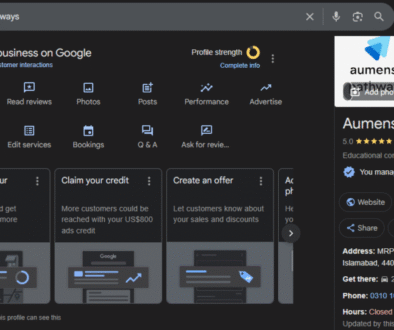Responsive Web Design: Why It’s Essential for Business Success
TL;DR: Responsive web design ensures websites adapt seamlessly across devices, improving user experience, search engine rankings, and conversions. By prioritizing mobile optimization, custom layouts, and modern web design services, businesses can build credibility, reach wider audiences, and drive consistent long-term digital growth.
Your website is often the first impression a potential customer has of your business. If it doesn’t look good or function properly on their device, you risk losing them in seconds. That’s why responsive web design has become a must-have, not a nice-to-have.
What Is Responsive Web Design?
Responsive design means your website automatically adjusts its layout, content, and functionality depending on the device being used—desktop, tablet, or mobile. No pinching, zooming, or endless scrolling. Just a smooth, user-friendly experience every time.
Why Responsive Web Design Matters
1. Better User Experience
A seamless experience keeps visitors engaged longer. When users can easily navigate your site, they’re more likely to explore your services and convert into paying customers.
2. Higher Search Engine Rankings
Google prioritizes mobile-friendly sites. A responsive site improves your SEO performance, making it easier for people to find your business when searching for web design services or related solutions.
3. Cost-Effective and Scalable
Instead of building multiple versions of your site, one responsive design works across all devices. It’s easier to manage, update, and scale as your business grows.
4. Increased Conversions
When your website is easy to use, people are more likely to fill out forms, make purchases, or contact your business. Responsive design directly contributes to higher conversion rates.
5. Strengthens Brand Credibility
Professional, responsive websites signal that your business is modern, trustworthy, and customer-focused—qualities that today’s clients expect from any serious IT services company.
Practical Tips for Responsive Web Design
- Prioritize Mobile Optimization: Most users browse on mobile first. Make sure your site loads quickly and looks great on smaller screens.
- Use Flexible Layouts: Grid-based systems and fluid images ensure designs scale smoothly.
- Test Across Devices: Don’t just check on your laptop. Test your site on different devices and browsers.
- Simplify Navigation: Menus, buttons, and CTAs should be clear and thumb-friendly.
- Leverage Custom Website Development: Partnering with experts in WordPress development or custom web design services ensures your site is built for long-term success.
Final Thoughts
Your website is more than a digital brochure—it’s the hub of your business. By investing in responsive web design, you’ll deliver a better experience to your customers, improve your SEO rankings, and future-proof your online presence.
In a world where users expect instant access and seamless experiences, responsive design is no longer optional—it’s essential for business success.



